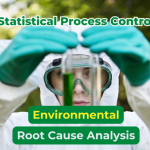
Reliability professionals are trusted advisors. Being a trusted advisor to a person making the biggest career decision is an enormous job—as is making a good, big decision. Where most advisors lose the “trust” in “trusted advisor” is when they mix the roles of “advisor” with “decision maker.” Advisors and analysts must first be true to their data and information. How that information is used is not something you control. These are three reasons a reliability professional should not care about the decision.
[Read more…]













 Ask a question or send along a comment.
Please login to view and use the contact form.
Ask a question or send along a comment.
Please login to view and use the contact form.